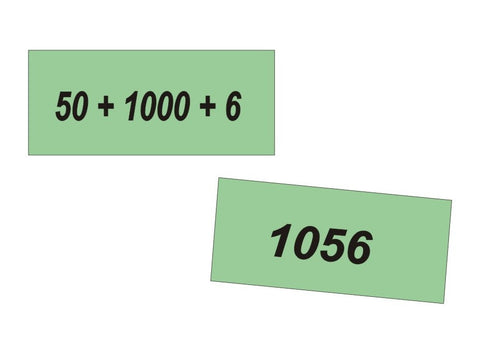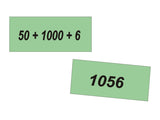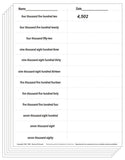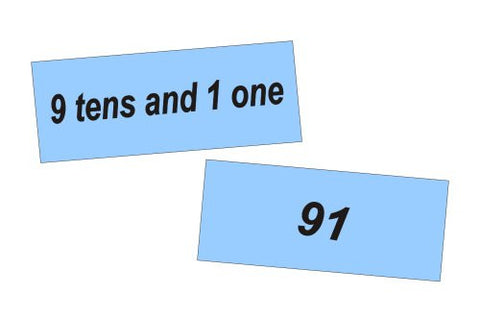Place Value Green
- More abstract place value matching work than with Golden Beads
- Many zeroes as placeholders and place value expressions that are out of order
- For children in grades K-3
- Color-coded two-way cardstock matching cards. Eight organization labels included
- Can be organized as 8 exercises with 12 matches each or 16 exercises with 6 matches
Predictable as well as challenging four-digit matching exercises: four-digit place value words with matching numerals, four-digit expanded form with matching numerals,and four-digit number words with matching numerals. A & B exercises are predictable, while C & D exercises are challenging. Beginning students may use with place value manipulatives or Montessori numeral cards. Once concepts are internalized, child advances to more abstract approach.
Color-coded, two-way cardstock matching cards. Eight organization labels included. (Lamination recommended for heavy use; cutting required.) Recommended storage (not included): eight or sixteen hardware drawers, boxes, or envelopes (depending on organization choice).
Blackline masters or digital PDFs for written responses (answer keys included). Recommended storage (not included): file.
Scope and Sequence Chart (Click here)
The teacher's experience and the sequence of skills in the students' basic math program are the best guides in determining which skills should be introduced first. In general, the scope and sequence chart above can be used as a guide.
A number of sets for younger children are "color coded." Some teachers present all the levels with an exercise set, while others prefer to present all the blue (two-digit) exercises, progress to the pink (three-digit), and culminate with the green (four-digit).
Other skills such as Roman Numerals require no prerequisites other rhan an understanding of place value. Such exercises can be presented any time.
We Also Recommend







